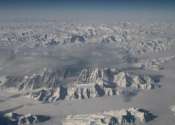Gravity sensors might offer earlier warning of earthquakes
(Phys.org)—A team of researchers from France, the U.S. and Italy has found evidence from the Tohoku-Oki earthquake that sensors that measure changes in gravity might offer a way to warn people of impending disaster faster ...







